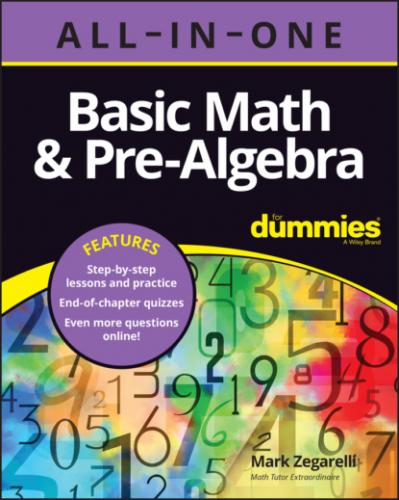(f)
8 Solve the following subtraction problems without using the number line:
(a)
(b)
(c)
(d)
(e)
(f)
Knowing Signs of the Times (and Division) for Negative Numbers
Multiplication and division with negative numbers is virtually the same as with positive numbers. The presence of one or more negative signs (−) doesn’t change the numerical part of the answer. The only question is whether the sign is positive or negative:
If the numbers have the same sign, the result is always positive.
If the numbers have opposite signs, the result is always negative.
For example,
As you can see, the numerical portion of the answer is always 6. The only question is whether the complete answer is 6 or −6. That’s where the rule of same or opposite signs comes in.
Similarly, look at these four division equations:
In this case, the numerical portion of the answer is always 5. When the signs are the same, the result is positive, and when the signs are different, the result is negative.
A. As you can see from this example, the numerical part of the answer (30) doesn’t change. Only the sign of the answer changes, depending on the signs of the two numbers in the problem.
Q. Solve the following four division problems:
A. The numerical part of the answer (6) doesn’t change. Only the sign of the answer changes, depending on the signs of the two numbers in the problem.
Q. What is
A. −1,764. First, drop the signs and multiply:
The numbers −84 and 21 have different signs, so the answer is negative:
Q. What is
A. 29. Drop the signs and divide:
The numbers
9
(a)
(b)
(c)
(d)
10 Solve the following division problems:
(a)
(b)
(c)
(d)
11
12
13
14
Practice Questions Answers and Explanations
1
(a)
(b)
(c)
(d)
2
